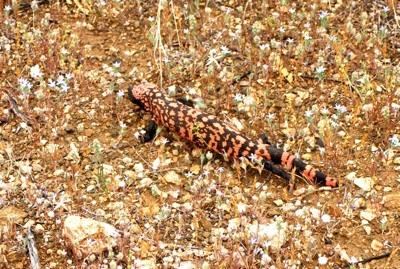Do you ever wonder what we know about the world around us?
The somewhat recent phenomenon known as "BioBlitzes" is rapidly rewriting what we know about the natural world that resides in national parks. In some cases, what we didn't know can appear astounding.
Perhaps the leader of the "BioBlitz" pack is Great Smoky Mountains National Park, where at last count the number of previously-unknown-to-the-world species discovered since an all-taxa biodiversity inventory got under way in 1998 had surpassed 900, while those not previously known to call the park home has soared beyond 7,100!
The "BioBlitzes" that are moving through other units of the National Park System are not as long-ranging, and so perhaps not as thorough. But they're impressive just the same.
During a 24-hour period from Oct. 21-22, for example, a biodiversity inventory swept through Saguaro National Park and, when all was said and done, more than 850 species were added to the roster of known species in the park. That number could continue to grow as organizers sort through data sheets and analyze samples that were collected.
Among the newcomers were 190 invertebrate species and 205 fungi species. Adding to the wealth of the 24-hour survey was an Electronic Field Trip organized by the National Park Foundation. Via it more than 90,000 students from around the country were able to take in two live broadcasts originating in Saguaro.
You can check out the nearly hour-long broadcast at this site, and even sort through previous Electronic Field Trip broadcasts made from other parks.
The BioBlitzes are made possible with the help of the National Geographic Society and, in many cases, local organizations. The Saguaro blitz was aided by Friends of Saguaro National Park and the Arizona-Sonora Desert Museum.
In 2010, Biscayne National Park near Miami, Florida, was the first ever marine bioblitz. Volunteers at the 2009 Indiana Dunes National Lakeshore BioBlitz turned up more than 1,200 species (download a PDF list here) compared with more than 1,700 in the Santa Monica Mountains National Recreation Area in 2008 and more than 650 in Washington, D.C.’s Rock Creek Park in 2007.




Add comment